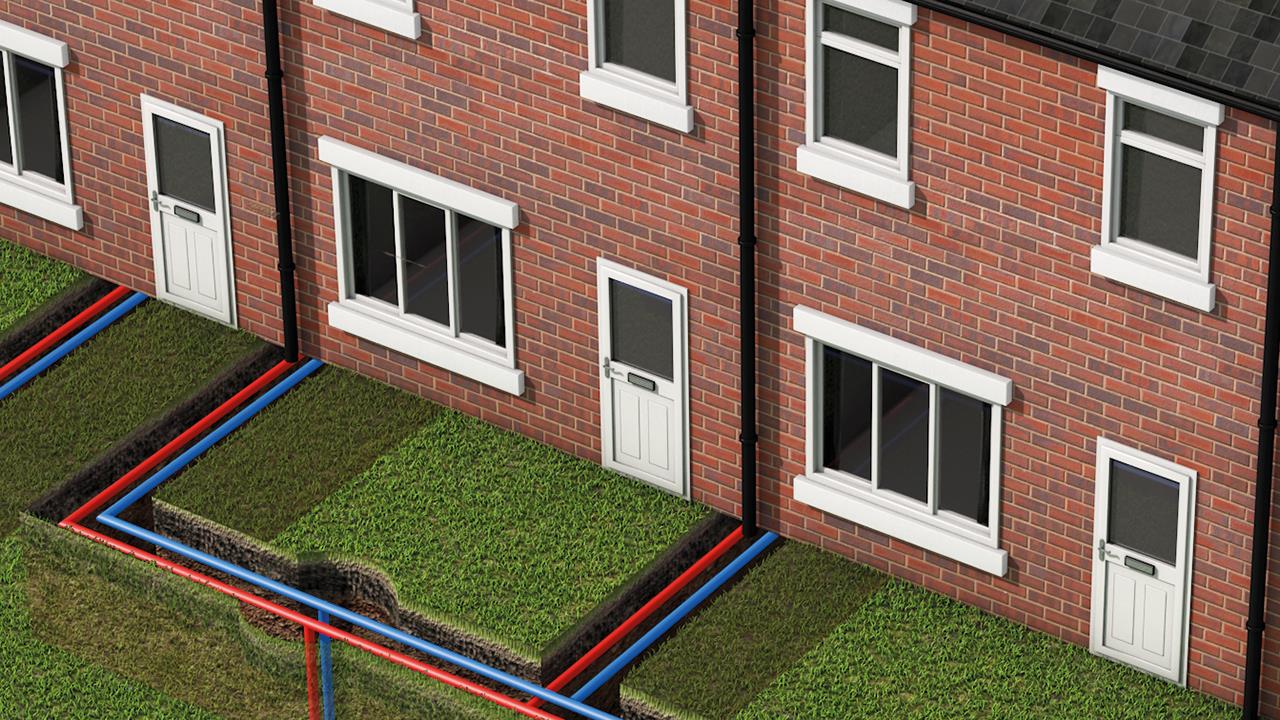

James Standley, Managing Director of Kensa Heat Pumps, explains why shared ground array infrastructure should be the way forward for zero carbon heating.
In November 2020, the government announced a 10-point plan outlining a commitment to making homes greener and decarbonising the UK’s electricity supply, to set the country firmly on track to meet its 2050 net-zero carbon target.
In this article, I’ll explain how unlocking the potential of shared ground array infrastructure will allow the industry to rapidly and effectively scale up to reach the volumes needed to help the UK achieve a zero carbon future.
According to the Climate Change Committee, 40% of the UK’s carbon emissions come from household heating and, with more people staying indoors and working from home due to the pandemic, figures show that domestic sector energy consumption rose by 2.5% in 2020.
Kensa believes that ground source heat pumps can help cut emissions from domestic heating significantly. Ground source heat pumps can achieve higher efficiencies than any other heating system by using the freely available and naturally replenished heat energy from ground and water sources.
The government’s 10-point plan stated that heat pumps will play a crucial role in the journey to net-zero carbon with 600,000 projected installations per year by 2028. However, fewer than 1% of homes in England currently use one, so it’s clear that production and installation of the technology will need to be massively scaled up over the next few years.
District heat networks are a recognised system architecture employed by many suppliers in large scale ground source heat pump installations.
A heat network (sometimes called district heating) is commonly defined as “…a system of insulated pipes that takes heating and cooling generated from a central source and distributes it to a number of domestic and non-domestic buildings”. Kensa advocates a subtly different approach to heat networks that is beginning to gain traction in the industry; shared ground loop arrays.
Ambient temperature pipework links clusters of boreholes to a network of heat pumps installed within individual properties. This shared ground loop system acts as a thermal energy supply grid, circulating low-grade heat from the ground, water, or waste heat processes, around a network of pipes to each individual heat pump. The heat pumps then upgrade this heat at the point of use to deliver heating and hot water whenever it is needed.
Shared ground loop arrays are unobtrusive, scalable, and perfectly suited to large domestic developments. Multiple properties benefit from the same borehole infrastructure and ground array installation costs can be reduced significantly the more properties that are added to the network.
Furthermore, ground source heat pumps on shared ground arrays are extremely versatile, as they can deliver cooling as well as heating. It is an investment that can last for decades, as shared borehole ground arrays have a lifetime of up to 100 years.
As such, Kensa believes that shared ground arrays should be regarded as the 21st Century equivalent to the gas network, creating a renewable heat infrastructure that effectively mimics the existing mains gas model and allows the householder to have a ‘white box’ ground source heat pump inside the property that mimics a boiler.
Kensa also believes that a split-ownership model can provide a viable pathway for the widespread adoption of ground source heat pump technology. Many entities, including energy companies, water companies, local authorities, and pension fund managers, should want to fund, own, and maintain this vital underground infrastructure in return for income via a long-term, modest connection fee.
If this infrastructure is already provided, then homeowners could be motivated to replace gas boilers with heat pumps in a phased switchover, subsidised by government support. It also means that plumbers could install ground source heat pumps on a neighbourhood scale, without involvement with a ground array, just as they have no involvement in the supply of the gas network.
This removes the cost barrier for homeowners and the skills barrier for installers that is associated with the groundworks, and would help stop the continued ‘distress purchase’ of gas boilers that we see currently.
As heat pumps become the default choice, the workforce will need to be scaled up. There is opportunity here – certainly a community-wide network of skilled installers will be needed on the frontlines to deliver 600,000 heat pump installations per year.
Kensa recognises that there may be a skills gap, but we believe this is easily surmountable; all experienced plumbing and heating engineers have valuable transferable knowledge, so now is the ideal time to upskill.
If you'd like to keep up-to-date with the latest developments in the heating and plumbing industry, why not subscribe to our weekly newsletters? Just click the button below and you can ensure all the latest industry news and new product information lands in your inbox every week.